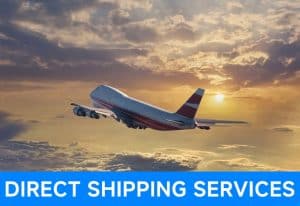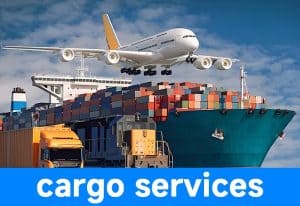Shipping Special Containers vs. Regular Containers from China to Auckland, New Zealand: A Comprehensive Guide
In the realm of international logistics, shipping goods from China to New Zealand, particularly Auckland, involves intricate processes and careful planning. This blog post delves into the intricacies of transporting both special containers (such as flat racks, open-top, and tank containers) and regular containers (20GP and 40GP) from various Chinese ports to Auckland, New Zealand. We’ll explore the processes, differences, and essential considerations involved in each type of shipment.
Regular Container Shipping: The Standard Approach
Regular container shipping, also known as FCL (Full Container Load) shipping, is the most common method for transporting large volumes of goods. It involves the use of standardized containers, typically 20-foot (20GP) or 40-foot (40GP or 40HC) in size, to carry cargo from China to Auckland.
Shipping Process:
1. Booking and Preparation: The shipper initiates the process by booking a container with a shipping line. The shipping line then allocates a container, and the shipper prepares the cargo for loading.
2. Loading and Sealing: The cargo is loaded into the container, which is then sealed by the customs authorities to ensure its integrity during transit.
3. Export Customs Clearance: The shipper submits the necessary export documentation, including invoices, packing lists, and bills of lading, for customs clearance.
4. Ocean Transport: The container is transported by sea from the Chinese port (e.g., Shanghai, Shenzhen, Ningbo) to Auckland.
5. Import Customs Clearance: Upon arrival in Auckland, the container undergoes import customs clearance, including payment of GST, duties, and other applicable fees.
6. Delivery: The shipping company then delivers the container to the consignee’s address in Auckland.
Special Container Shipping: Handling Oversized and Unusual Cargo
Special containers, on the other hand, are designed to accommodate cargo that exceeds the dimensions or weight limits of regular containers or requires specialized handling. These include flat racks, open-top containers, and tank containers.
Shipping Process:
1. Pre-Booking and Approval: Due to the unique nature of special containers, pre-booking and approval from the shipping line are crucial. This involves submitting detailed information about the cargo, including its dimensions, weight, and any special handling requirements.
2. Loading and Securing: The cargo is loaded into a special container, which may require specialized equipment and techniques. The container is then properly secured to ensure safe transportation.
3. Export and Import Customs Clearance: Similar to regular container shipping, special containers undergo export and import customs clearance procedures. However, the nature of the cargo may require additional documentation and inspections.
4. Ocean Transport and Delivery: The shipping company transports the special container by sea to Auckland, where customs clearance occurs before delivering it to the consignee.
Key Differences and Considerations
Cargo Type: Regular containers are suitable for standard-sized and weighted cargo, while special containers cater to oversized, heavy, or awkwardly shaped items.
Cost: Special container shipping tends to be more expensive due to the specialized equipment, handling, and additional documentation required.
Time: The shipment of special containers may take longer due to the complexity of the loading process and potential delays in customs clearance.
Risk Management: Both types of shipping involve risks, but special container shipping requires additional attention to safety and security measures to ensure the cargo’s integrity during transit.
Essential Considerations
Packaging and Securing: Regardless of the container type, proper packaging and securing of the cargo are vital to prevent damage during transportation.
Customs Regulations: Familiarize yourself with New Zealand’s customs regulations and import requirements to ensure a smooth clearance process.
Insurance: Consider insuring your cargo against potential loss or damage during transportation.
Shipping Line Selection: Choose a reputable shipping line with experience in handling your specific type of cargo to minimize risks and ensure timely delivery.
In conclusion, shipping goods from China to Auckland, New Zealand, whether in regular or special containers, requires careful planning and attention to detail. By understanding the differences between the two types of shipping and adhering to essential considerations, shippers can ensure their cargo arrives safely and efficiently at its destination.
Honza International Logistics Co., Ltd. has been specializing in logistics for 11 years and has rich transportation experience. We have arranged the transportation of goods for tens of thousands of customers from different countries. The basic transportation services are sea freight (FCL/LCL), air freight, express(DHL/Fedex/UPS), and door-to-door services. If you want to know more details, please feel free to consult at any time. Our company website: www.honzalogistics.com



